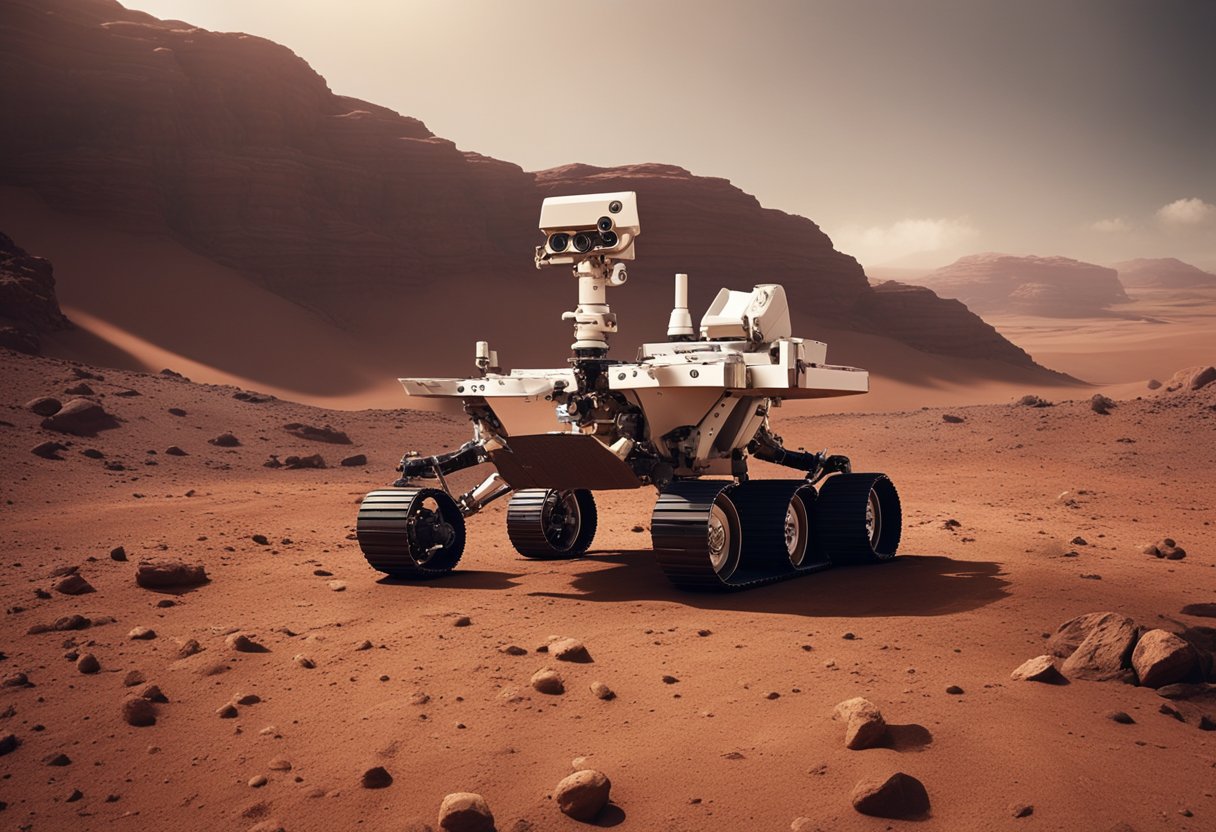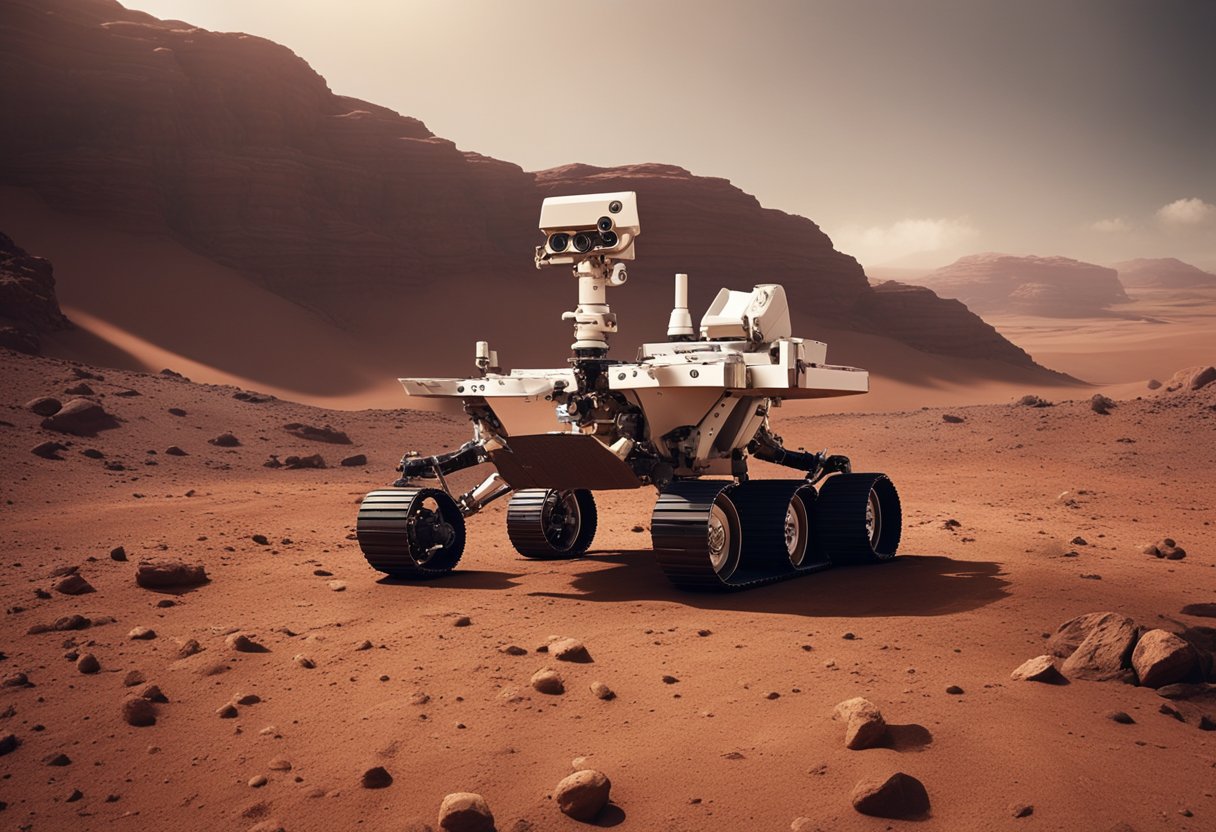
Mars expeditions have captivated our collective imagination for generations. As the fourth planet from the Sun and our closest celestial neighbour with a solid surface, Mars presents a viable target for exploration. For years, various missions have aimed to unravel the mysteries of the Red Planet, seeking to understand its atmosphere, climate, and potential to support life. These endeavours range from robotic rovers traversing the arid martian landscape to sophisticated orbiters mapping its surface and analysing the composition of its thin, carbon dioxide-rich atmosphere.

The journey to Mars is more than a quest for knowledge—it’s a testament to our technological prowess and our enduring curiosity. With each mission, we gain valuable insights into the planet’s geology, such as evidence of water flow in its ancient past and the volcanic activity that once shaped its rugged terrain. As we plan for future human missions, our understanding of the harsh martian environment deepens, guiding the development of new technologies necessary for sustaining human presence on another world.
The exploration of Mars is ongoing, with missions such as the Perseverance rover and Ingenuity helicopter expanding our capabilities of remote science and flight in extraterrestrial atmospheres. Together, our continued efforts not only enhance our comprehension of Mars but also pave the way for potential future expeditions where humans may one day set foot on its surface.
Exploration of Mars has come a long way from the first flyby attempts to the sophisticated rovers that roam the Martian surface today. We’ve witnessed remarkable feats of engineering and science as various missions have sought to unlock the mysteries of the Red Planet.
The era of Mars exploration began humbly with Mariner 4, the first successful flyby mission by the USA, which gave humanity its first close-up images of Mars back in 1965. However, before this success, there were numerous attempts by the USSR that failed to leave Earth’s orbit or to deliver useful data back to us.
The late 20th century saw significant advancements with Mars 2, the first spacecraft to reach Mars’ surface, though the lander was destroyed in the process. It wasn’t until Viking 1 that a mission would both successfully orbit Mars and deploy a lander that could return data from the Martian surface. Other missions like Mars Global Surveyor and Mars Climate Orbiter, though faced with challenges, have significantly expanded our knowledge base. The latter mission famously failed due to a metric-imperial conversion error, but it served as a harsh lesson to improve precision in interplanetary communications.
An era of roving exploration was ushered in with Sojourner – part of the Mars Pathfinder mission – which made its mark as the first rover to operate on Mars in 1997. This tradition of exploration was continued by the twin rovers Spirit and Opportunity which far exceeded their intended lifespans, providing valuable insights into the terrain and geology of Mars. The much-celebrated Curiosity rover, part of the Mars Science Laboratory mission, was equipped with an advanced payload of scientific equipment and has been exploring Gale Crater since 2012.
The bold endeavours of both the USSR and USA have paved the way for future exploration, helping to kindle dreams of Martine ventures not just for robotic emissaries, but potentially for human explorers, as teased at SpaceVoyageVentures.com.
In preparing to encounter Mars more intimately, we must understand its atmospheric qualities and climatic behaviours, which are markedly different from those on Earth.
Mars exhibits a climate system driven by dust and ice, with significant seasonal variations and dynamic weather patterns. Weather on Mars is influenced by factors such as the planet’s elliptical orbit and axial tilt, which, similar to Earth, produce seasons. However, the climate of Mars is generally colder, with average temperatures around -60 degrees Celsius. One of the defining features of the Martian climate is the presence of giant dust storms that can envelop the entire planet, affecting temperature and wind activity.
The wind on Mars plays a crucial role in these dust storms, and our understanding of these dynamics has been enriched by missions like Mariner 9 and MAVEN. Mariner 9, the first spacecraft to orbit another planet, provided detailed views of Mars, including its weather patterns. MAVEN, on the other hand, has been key in studying the Mars atmosphere and its interaction with solar winds, revealing processes that have influenced the current state of the Martian climate.
Mars’s atmosphere is composed primarily of carbon dioxide, constituting approximately 96% of its makeup. The thin atmosphere, over 100 times less dense than Earth’s, poses significant challenges for both robotic and human missions, offering little insulation from the cold and minimal protection from solar and cosmic radiation.
Data from the InSight mission has conveyed new insights into the atmospheric science of Mars, including atmospheric pressure, temperature, and wind speed, further advancing our understanding and contributing to the climatology of the planet. This knowledge is crucial for future expeditions, potential habitation efforts, and, intriguingly, for the realm of space tourism as proposed by ventures such as SpaceVoyageVentures.com.
Understanding the exact composition and behaviour of the Martian atmosphere is not merely an academic pursuit; it’s a stepping stone for our species’ next giant leap. The knowledge we’ve gained from missions like MAVEN and InSight feeds directly into the future of exploring and even inhabiting Mars.
In this section, we delve into the intricate details of Mars’ surface and geology, exploring the rock formations, soil composition, diverse topography, and geophysical characteristics that define the Martian landscape.
Mars offers a rich variety of rock formations that provide insight into the planet’s history. The Mars Science Laboratory has conducted in-depth analyses, revealing that Martian rocks are volcanic and sedimentary in origin, suggesting past geological activity. Soil samples have unveiled that Mars‘ regolith—a layer of loose, heterogeneous material—is composed of fine particles that can tell us a great deal about potential past liquid water events on the planet’s surface.
Our understanding of Martian topography has been greatly enhanced by satellite imagery and rover missions, which show a landscape punctuated by colossal volcanoes, deep valleys, and impact craters. Notably, Mars hosts Olympus Mons, the largest volcano in the solar system. Analysis of the planet’s gravitational field has also been instrumental in revealing subsurface features, expanding our knowledge of the internal structure of Mars and guiding the search for liquid water reserves.
In our quest to conquer the red planet, we employ a myriad of sophisticated technologies for Mars exploration, each meticulously crafted to withstand the harsh Martian environment.
Mars exploration wouldn’t be what it is today without the advanced rovers and landers that have graced its surface. The Perseverance rover, a marvel of design and engineering, embodies the culmination of such technologies. Equipped with a suite of scientific instruments, it serves as a mobile laboratory capable of conducting geochemistry and searching for signs of past life. Earlier missions like Phoenix laid the groundwork with studies of Martian soil and atmosphere. The design of these systems focuses on autonomy and resilience to traverse and study the Martian terrain effectively.
Above the surface, orbiters and flybys act as our eyes in the sky, providing vital data. The Trace Gas Orbiter has been instrumental in sniffing out methane, a potential indicator of microbial life. India’s Mars Orbiter Mission also plays a critical role, capturing images and studying the Martian atmosphere. These are intricate pieces of technology orbiting Mars, transmitting invaluable information back to us.
Technological advancements both on the surface and from orbit are crucial in carving the path for future exploration and even potential human missions to Mars.
In this section, we explore some of the most common queries related to Mars exploration, highlighting countries involved, milestones by rovers, key players in manned missions, a timeline of expeditions, upcoming NASA missions, and recent breakthroughs.
Several nations have embarked on journeys to Mars, with successful missions mainly attributed to the United States, the European Space Agency, India, and China. The NASA Mars programme stands out for its sequence of advanced rovers and landers.
Mars rovers such as Spirit, Opportunity, Curiosity, and Perseverance have made significant discoveries. These include evidence of water in Mars’s past and complex organic materials, which hint at conditions that may once have supported life. Learn more from National Geographic’s article on the subject.
NASA remains the frontrunner, targeting the 2030s for manned missions. Space-faring companies like SpaceX are also key players, with aspirations to facilitate Mars colonisation. The Mars Society discusses these ambitions in detail.
Mars expedition milestones began with flybys in the 1960s, followed by landers and rovers from the 1970s onwards. Notable missions include Mars Pathfinder in 1997 and the more recent Mars 2020 mission, which sent the Perseverance rover to the Red Planet.
NASA is developing the Mars Sample Return mission, aiming to collect samples gathered by Perseverance and return them to Earth for in-depth analysis. Details can be found on NASA’s Mars 2020 mission FAQ page.
The Mars Express mission, run by the European Space Agency, has provided extensive data on Mars’ atmosphere and subsurface. The ESA’s Mars Express FAQs convey its contributions to our understanding of the planet’s geological history and potential for water.